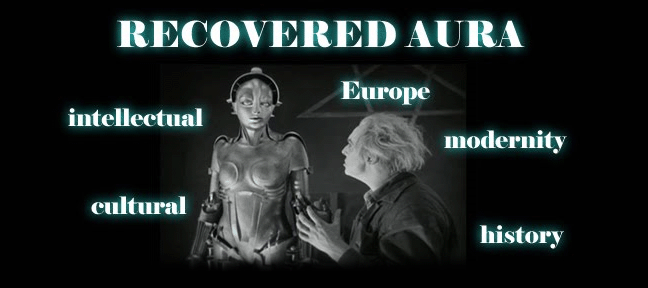_-_Julien_Offray_de_La_Mettrie.jpg) English edition of Man a Machine by La Mettrie
English edition of Man a Machine by La MettrieIn the 17th C. the French philosopher Rene Descartes (of "I think therefore I am" fame) had posited that animals were nothing more than complex machines. In the following century, Julien Offray de La Mettrie (1709-1751) dared to take this a step further. The publication of his text Man a Machine (L'homme machine) in 1748 was just the beginning of a writing career that would eventually cause him to flee first France, then Holland to the waiting arms of the tolerant "enlightened despot" Frederick the Great of Prussia.
 19th C. photograph of Vaucanson's duck, it was destroyed in 1879.
19th C. photograph of Vaucanson's duck, it was destroyed in 1879.Notice the enormous drum portion of the mechanism.

 Vaucanson's other automata, a flute-player and a drum-player, flank the famous duck.
Vaucanson's other automata, a flute-player and a drum-player, flank the famous duck.Human beings have been making mechanical reproductions of living things since classical Greece. But it was in the Age of Enlightenment that the mechanistic metaphors of biology and the ingenuity of early roboticists converged. The greatest of all 18th C. automaton-makers (automaton is the earlier word for robot) was Jacques de Vaucanson (1709-1782) - born the same year as La Mettrie! His mechanical duck and clock-work musicians were the toast of the philosophes and an increasingly technologically interested public. Soon automatic animals and musicians could be found throughout the great European capitals, further strengthening the connection between the idea that living things were merely God's (or Nature's) machines and that human kind were getting closer and closer to re/creating life through the cleverness of their mechanical knowledge.
The Silver Swan, made sometime in the mid 18th C. by John Joseph Merlin (1735-1803) is still performing for delighted audiences at the Bowes Museum in County Durham, England. It was already over a hundred years old when Mark Twain saw it and was amazed. The creature rests on glass rods which resemble the shimmering surface of a pond. Watch as it bends to pluck a golden fish from the artificial pond and swallows it whole. Imagine what this must have been like to 18th and 19th C. eyes!
The Silver Swan, made sometime in the mid 18th C. by John Joseph Merlin (1735-1803) is still performing for delighted audiences at the Bowes Museum in County Durham, England. It was already over a hundred years old when Mark Twain saw it and was amazed. The creature rests on glass rods which resemble the shimmering surface of a pond. Watch as it bends to pluck a golden fish from the artificial pond and swallows it whole. Imagine what this must have been like to 18th and 19th C. eyes!
La Joueuse de Tympanon is tiny automaton-percussionist contemporary with Vaucanson's creations. She was made especially for Queen Marie Antoinette. Though not life-size, this automaton is never-the-less a marvel to behold. Like the duck, she sits atop an enormous constellation of interconnected mechanical parts which create the subtle movements of her hammer-holding hands. The figure of the automaton will begin to play a greater role in the European imagination. In the Romantic period, clockwork bodies (especially female) become a trope of what Freud will name "the uncanny"- but more about this later in the course.

No comments:
Post a Comment